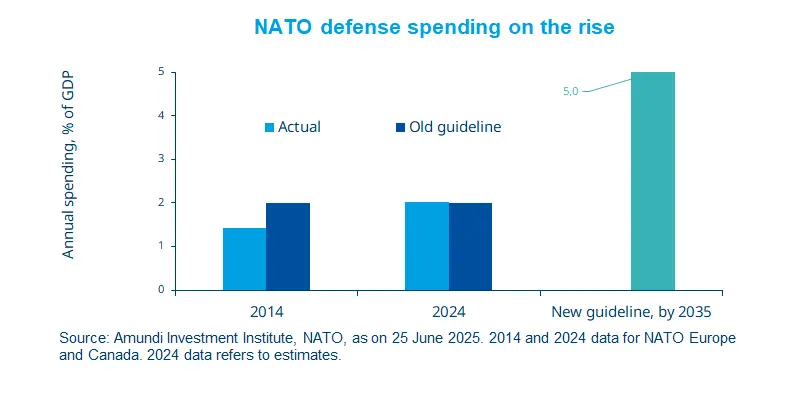Summary
Highligts
The new world order, intensified by threats like the Russia-Ukraine war, is driving calls for higher defence spending.
This is a reminder for Europe to invest more in defence, infrastructure and enhance integration of its institutions.
From an economic perspective, this may be positive for the region’s economic growth in the long term.
In this edition
In June 2025, the NATO committed to allocating 5% of member countries’ GDP annually to defence and related security spending by 2035. Financing this is a big question, particularly for Europe, and Germany appears best positioned. Government’s intention is evident from its plans to raise more debt and from the approval of the German budget by the Chancellor’s cabinet. While there is clear recognition of the need to do so in other countries such as France, Italy and Spain, fiscal space is limited. This suggests that, at some point, common debt at the EU level may be necessary. Another proposal made earlier this year is a European Defence Mechanism. Overall, increased defence and infrastructure investment, joint debt issuance, and deeper EU integration, may enhance confidence in European markets and the euro.

Key dates
30 June Japan and India industrial production, UK GDP | 1 July EZ CPI, US ISM, Indonesia CPI, South Korea trade balance | 3 July US labour markets, |
*Diversification does not guarantee a profit or protect against a loss.
Read more

